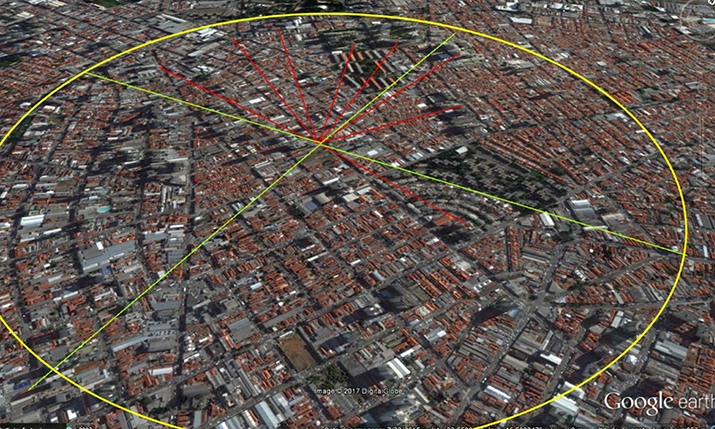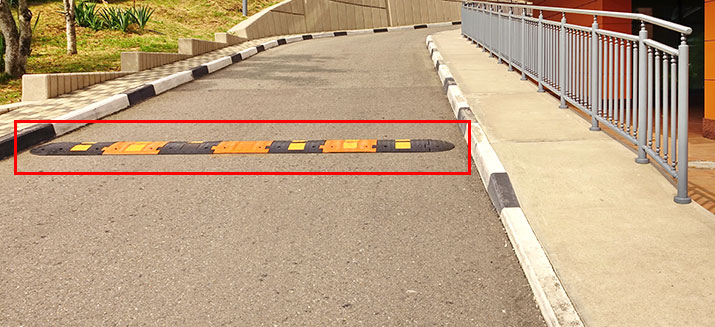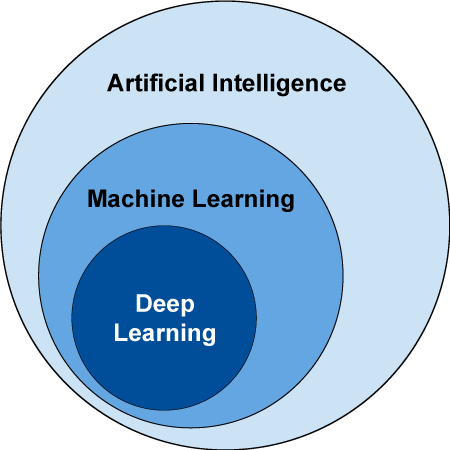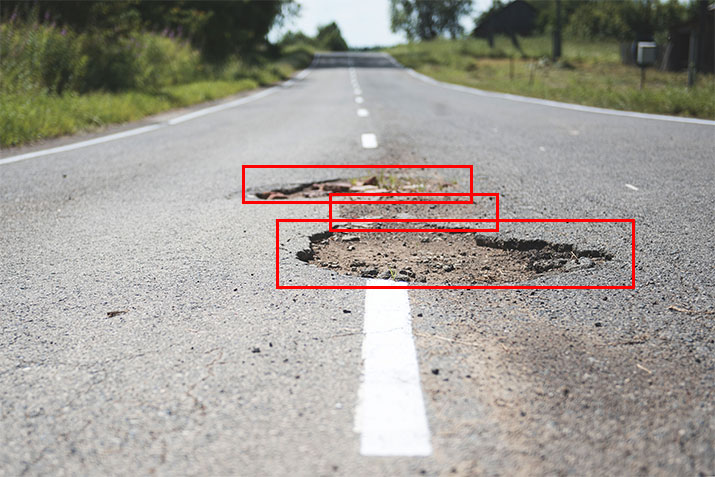How Smart Cities Can Benefit from Autonomous Cars?
Smart cities, the concept in itself, it is more than solely implementing known and new technologies – this is digital cities. When we talk about something smart, we are talking about the capability of connecting technologies, dealing with data, and bringing value – in the case of smart cities, bringing value for the perspective of citizens and governments.
Smart cities start with smart homes. Based on smart homes data about the consumption of basic services by the citizen (i.e.: water, gas, electricity, sewer, internet broadband, etc.), governments and service providers can analyze, make decisions, and take actions by providing the proper load balance of services for the city and for the citizens. When we talk about smart homes and smart cities, what is the first thing that comes to mind than mobility? Mobility is a pain point for big cities around the globe. So, how autonomous cars can support smart cities?
Technology + Cars = Opportunities
We all have been reading about connected and autonomous cars and their benefits – since decreasing car accidents until turning people’s life smarter by the integration with other technologies. It is a vast subject to explore. When mixing cars with emerging technologies such as internet of things (IoT), artificial intelligence (AI), machine learning (ML), deep learning (DL), there is no limitation for the creativity, for the innovation; and I am not talking about user experience only, I am talking about the insights provided by all the data involved too. I am talking about new business models (even for existing brands), opportunities for entrepreneurs to develop new products and new services, fuel governments with data generated to take right and quick decisions, and opportunities for product R&D and application engineers too. As we can see, there are new opportunities (which includes new careers) for all the ecosystem – the ones directly and even indirectly involved. In other words, it is a new lifestyle for users and new businesses coming up as quick as we can imagine. Are you prepared for that?
Connected Cars and the City
Connected cars are around us for a few years. By using the Internet of things (IoT), it is possible to predict, for example, car preventive and even corrective maintenance, and (yes) provide insights and inputs for smart cities – I am going to tell you how.

Figure 1: Google Earth 3D view of a district of Sao Paulo / Brazil (Credits: Wardston Consulting, Map data: Google, DigitalGlobe).
Figure 1 shows an area of a city divided into 4 quadrants (with very similar characteristics). A user (U1) of a connected car (CC1) in one quadrant (Q1) goes to maintenance more often than another user (U2) of the same connected car model (CC2) in another quadrant (Q2). There are several hypotheses, but engineers do prefer to be based on data, and connected cars data tell us some stories (based on a known context):
- the average speed of (1) is higher than (2);
- the average time from point of origin to point of destination of (1) is higher than (2);
- the average fuel consumption of (1) is higher than (2);
- the average gear shift of (1) is higher than (2);
- some more data.
Based on the few data shown above, it seems that the streets of Q1 and Q2 are not that similar as it was supposed to be. With in-loco analysis, it was detected that they are really not: Q1 has more bumps and potholes than Q2.

Figure 2: Bump on the street.
Regarding Figure 2, it is possible to provide some insights and inputs for local government:
- Create more points of car fuel stations in Q1;
- Create a type of bump capable to transfer energy from the mechanical impact of cars tires to connected gears, in order to, for example, generate electric energy;
- Many other insights and inputs.
Bumps are provided by local government, but potholes are not – local government should fix them. But, to fix them, it is necessary to know where they are.
Autonomous Cars Supporting Smart Cities
Autonomous cars can gather, process, send, and receive data in order to make decisions and take actions. A complex ecosystem to deal with big data, mission-critical and fully connected systems running in real-time and mixing internet of things (IoT), artificial intelligence (AI), machine learning (ML), deep learning (DL) that makes everything work together.

Figure 3: Understanding the relationship between artificial intelligence -AI, machine learning -ML, deep learning -DL (Credits: IEEE Communications Society).
Computer vision with trained machine learning (ML) models to detect and recognize things around to avoid (i.e.: potholes) and not to collide (i.e.: with other cars, people, objects, etc.) is part of the complex cognitive block of autonomous cars.

Figure 4: Potholes on streets can be detected and recognized by computer vision -CV.
Moreover, while autonomous cars are working for themselves to make decisions and to take actions, they can fuel local government with data and who else is interested in working together for a better community:
- When autonomous cars identify potholes, they can adjust the speed to less damage the car plus they can map the location and the types of potholes – in order to notify the government to fix them;
- When autonomous cars identify bumps, they can adjust the speed to less damage the car plus they can map the location of bumps – in order to notify the government to analyze and cross this information with several others (for example, areas with high score of car accidents versus the number of bumps, and other analysis);
- Many other things in order to create, manage, and output (for several purposes) more and more information.
It is possible to expand the analogy of the 4 quadrants mentioned before by dividing the city into small areas and each area has its own 4 quadrants. Autonomous cars driving from point A to point B to point C to point A, we understand that they are moving in and out several quadrants, what it makes them as like remote stations gathering information and sending these data to some cloud, to some database, building a historical record of, for example, real-time weather temperature, rain, snow, air quality, UV, and other climate data building dashboards – I am talking about real-time data, not forecast (read more about one of my IoT+AI/chatbot projects for smart cities called SmartyTempy).
For example, by providing real-time information about air quality to fuel a bike riding service to notify bikers if the area is proper for riding a bike or not. And, with enough data, it is possible to predict some natural disaster and take actions before it happens. If the street or road has snow or flood, by using augmented reality (AR) – with previously mapped data – while human eyes sometimes cannot see the risk, it is possible to show in car or smartphone screen the danger in some meters ahead. As we can see, there are many benefits from autonomous cars to smart cities.
Remember: When we talk about data, big data, cloud, database, and related, the main thing is: data and numbers by themselves do not tell us stories, stories are built based on a known context plus data and numbers.
The US$ 1 Billion Question
With all that said, who owns the data?
 Dalton Oliveira is an Electronics Engineer working as a Global Digital Transformation Consultant, Mentor, Speaker (application, product, project, process, engineering) at Wardston Consulting. Awarded Top 3 IoT World Series (competing with Siemens, AT&T, Bayer, others) and Facebook Testathon Best Product Idea. Experienced in global mission-critical projects with US$ Billions budget in global companies (consumer goods, telecom, scientific), governments, universities since 2002. For internet of things (IoT) and artificial intelligence (AI), some of his authoral projects are installed from Silicon Valley to New York. Guest speaker at IoT World Series event in Atlanta/USA, guest quote writer at Freedom IoT Manufacturing in Cincinnati/USA, guest judge for NVC at The George Washington University in Washington DC/USA. Mentioned in academic paper at Saudi Arabia University + MIT/USA, interviewed by Riviera Magazine (exclusive 1/3 page), interviewed by Cultura TV (tv news, prime time, nation wide). Contact him at LinkedIn and at Wardston website.
Dalton Oliveira is an Electronics Engineer working as a Global Digital Transformation Consultant, Mentor, Speaker (application, product, project, process, engineering) at Wardston Consulting. Awarded Top 3 IoT World Series (competing with Siemens, AT&T, Bayer, others) and Facebook Testathon Best Product Idea. Experienced in global mission-critical projects with US$ Billions budget in global companies (consumer goods, telecom, scientific), governments, universities since 2002. For internet of things (IoT) and artificial intelligence (AI), some of his authoral projects are installed from Silicon Valley to New York. Guest speaker at IoT World Series event in Atlanta/USA, guest quote writer at Freedom IoT Manufacturing in Cincinnati/USA, guest judge for NVC at The George Washington University in Washington DC/USA. Mentioned in academic paper at Saudi Arabia University + MIT/USA, interviewed by Riviera Magazine (exclusive 1/3 page), interviewed by Cultura TV (tv news, prime time, nation wide). Contact him at LinkedIn and at Wardston website.
Sign Up for IoT Technical Community Updates
Calendar of Events
IEEE 8th World Forum on Internet of Things (WF-IoT) 2022
26 October-11 November 2022
Call for Papers
IEEE Internet of Things Journal
Special issue on Towards Intelligence for Space-Air-Ground Integrated Internet of Things
Submission Deadline: 1 November 2022
Special issue on Smart Blockchain for IoT Trust, Security and Privacy
Submission Deadline: 15 November 2022
Past Issues
September 2022
July 2022
March 2022
January 2022
November 2021
September 2021
July 2021
May 2021
March 2021
January 2021
November 2020
July 2020
May 2020
March 2020
January 2020
November 2019
September 2019
July 2019
May 2019
March 2019
January 2019
November 2018
September 2018
July 2018
May 2018
March 2018
January 2018
November 2017
September 2017
July 2017
May 2017
March 2017
January 2017
November 2016
September 2016
July 2016
May 2016
March 2016
January 2016
November 2015
September 2015
July 2015
May 2015
March 2015
January 2015
November 2014
September 2014


